The 体育祭 takes place during 秋 (あき - aki - Autumn) for two reasons - firstly, the nice cool 秋 weather is perfect for running around in; secondly, it's a season typically associated with sport and culture (it even has two public holidays called "Sports Day" and "Culture Day", if you don't believe me). The 文化祭 also used to take place during 秋, but the pattern was spoiled when the school exam timetable changed and it had to be moved into 春 (はる - haru - Spring) several years ago. In any case, the 体育祭 has been taking place for a very long time - one of my schools celebrated their 63rd this year.
The basic idea of the 体育祭 is for students to compete against one another in their homeroom groups (indicated in this case by different coloured headbands) through a series of events. Some are more exhibitions of the students' skills and achievement, some are just for fun and everything else is done for points to determine the winning class. Before any of that gets started though, there's a lot of work to be done. Rehearsals and drills are done to make sure everything runs smoothly and that everyone knows where they're supposed to be at any given point.
This is particularly important for the demonstrations and for the traditional opening ceremony, which involves students parading around the grounds and assembling in front of the Principal for his or her opening address.
After that, the students spread out neatly across the ground and begin what's called ラジオ体操 (らじおたいそう - rajio taisou), meaning "radio calisthenics/exercises"; this is basic stretching and warming up that has been done nationally before formal exercise for decades.
With the formalities and warmups out of the way, the students are ready to start the day's events. Not all of them are totally novel - part from the obvious straight sprints, basic relays and longer distance runs, there are several Japanese versions of athletics carnival mainstays that work much the same way they do at home.
Firstly, there is the 綱引き (つなひき - tsunahiki - "rope pull"), which as you've probably guessed is a tug of war. Each round in this case was done as a best-of-three by a whole year group.
Similarly, the 三人四脚 (さんにんよんきゃく - san nin yon kyaku - literally "three people four legs") is exactly the same concept as the three legged race at home but with an extra person in the mix. This does make it a bit more difficult to coordinate though, especially when you have obstacles to navigate!
Next, we have 大縄跳び (おおなわとび - oonawatobi - literally "big rope jump"), a skipping event in which teams try to coordinate their feet and try to make as many consecutive jumps as they can. I'm sure this isn't new to you!
Finally, the スプーンレース (supuun reesu - "spoon race") is a dead ringer for the egg and spoon race, even down to the name. I'm not sure the egg has ever figured into it here though, or the literal spoon for that matter - I'm told it's usually a racket and ball or in this case, a ping pong paddle.
So which events separate the 体育祭 from athletics carnivals and where is all this danger I was promising? I think 騎馬戦 (きばせん - kibasen - "cavalry battle") might be the event for you. A student wearing a coloured cap or bandana is hoisted up on to the shoulders of two of his or her classmates and clashes with other "horses" trying to steal their hats for victory.
The fights can get very fierce and the considerable height and precarious balance make it extremely dangerous. Each horse is chased around by a teacher ready to catch any riders who leave the saddle involuntarily; everyone seems to breathe a sigh of relief when all the matches are finished up without loss of life or limb.
Equally rough is another game called 棒倒し (ぼうたおし - boutaoshi - "pole knock-down"), where two teams (red and white) compete at opposite ends of the field to knock down the opponent's 棒 and protect their own. The winner is the first team to either climb up or pull down the 棒 and pull off the 旗 (はた - hata - flag) on top. Unlike 騎馬戦, this game seems to be only for the boys - they compete shirtless so that they don't get throttled or wrenched off the 棒 on to the hard ground below. Even then, I'd imagine your chances of being trampled or elbowed in the excitement would be fairly high - they must be a lot tougher than I am.
Rounding out the afternoon's danger was the boys' part of what's known in Japan as マスゲーム (masu geemu - "mass games"), synchronised gymnastics or performances conducted in big groups. This is a traditional part of the 体育祭, but each school adds its own personal touches.
This form of マスゲーム is called 組み体操 (くみたいそう - kumi taisou - "group gymnastics") and involves increasingly difficult poses and human pyramids. This is probably what the bulk of the rehearsals focused on!
The finale featured what I called a "human cone", with three layers of students standing on top of one another like a wedding cake. Apart from being an impressive feat of strength, their balance was spot on and I'm happy to say nobody plunged headfirst from the top. Would we be allowed to do this kind of thing elsewhere, I wonder?
As exciting as the boys' display was, they were completely upstaged by the girls, who had a few tricks of their own to show off. After completing a few 組み体操 poses to frantic music, they showed everyone what a マスゲーム should look like.
They formed a heart across the field and started "writing" words with their pompoms in the middle.
This started off fairly simply with "LOVE"...
...and ended with the whole team getting involved. Apart from the lovehearts and XOXO, the top row is spelling out "CHU", which is the Japanese onomatopoeia for a kiss (a bit like "mwa", I suppose); the bottom says アイラブユー (ai rabu yuu - "I love you"). They were certainly sticking to their theme!
After lunch came what I called the "tyre grab", for want of a better name. I asked one of the teachers what this event was called, but apparently it doesn't have a name - it may well be a new invention. Having said that, there's apparently a similar game called 棒引き (ぼうひき - bouhiki - "pole pull") which is done with wooden poles instead of tyres; in both cases, the aim is to wrestle as many as possible from the other team. The team with the most tyres or 棒 at the end is the winner. Some students seemed especially keen to win, with a few hapless competitors being dragged across the field into the other team's "base", tyre and all.
Next up was the PTA event, which all 体育祭 have to encourage parent and teacher participation and make sure it's not just the students having fun. In this case it was an event called the 玉入れ (たまいれ - tama ire - ball toss), but I'm told any other easy game like the スプーンレース can be used instead. Two teams are each given a set number of foam balls and a time limit to sink as many of them as possible into the box or basket. The basket is sometimes mounted on a high pole, but in this case it was on the back of a very excitable student who tried to avoid us all. Our team won the event despite me - I don't think I got a single ball in!
There was a brief moment of seriousness at this point as the "club parade" started. The 運動部 (うんどうぶ - undoubu - sports clubs) members walked around the field in uniform while an announcer read out each one's awards and achievements, before they gathered neatly in the middle for the next event - the club relay. I'm told that each club is put into a "group", with some groups being told to take the event quite seriously and others allowed to have some fun with it.
For the first few runs, things seemed quite sensible, with the 野球部 (やきゅうぶ - yakyuubu - baseball club) members doing their best to keep up with the 陸上部 (りくじょうぶ - rikujoubu - track and field club). After a few races, however, I noticed that a 水泳部 (すいえいぶ - suieibu - swimming club) member had started using a kickboard for a relay baton and things escalated from there. The 卓球部 (たっきゅうぶ - takkyuubu - ping pong club) started using a ping pong paddle, the 山岳部 (さんがくぶ - sangakubu - mountaineering club) upped the stakes by handing over a full hiking pack at each change and then things just got ridiculous.
By the end, the 応援団 (おうえんだん - oendan - cheer squad) was running a their enormous flag around the track and the 柔道部 (じゅうどうぶ - juudoubu - judo club) was struggling with a full-sized crash mat. It took the latter so long to pass it between each other that they lost by a whole lap; they decided to lose in style and the last tag was done by throwing the last runner down on top of the mat. I didn't think something as that started as sensibly as this would have such a silly finale!
The final event of the day was the 障害物競走 (しょうがいぶつきょうそう - shougai butsu kyousou - "obstacle course"), which is a series of mini-events or "競走" (きょうそう - kyousou - "races") that vary greatly from school to school. In our case, the first part was an extremely strange crawl in a taped-together tube of cardboard, which made the competitors look like tank treads or conveyor belts. The teachers looked at me blankly when I asked what this was called.
Next was the 飴食い競走 (あめくいきょうそう - ame kui kyosou - "lolly eating race"), where competitors have to find a lolly in a tray of flour without using their hands. Once they've done that, they can take their flour-covered faces to the next stage:
Strangely, this one doesn't have an official name either.
Next was the net crawl, where competitors have to commando crawl through cargo netting. Apparently this is a 体育祭 favourite.
The unofficially named 風船割り競走 (ふうせんわりきょうそう - fuusen wari kyousou - "balloon popping race"), where students have to pop a balloon by sitting on it, marked the home stretch. It was starting to feel like a birthday party by this stage.
Probably the most universal of the 障害物競走 events is known as the パン食い競走 (ぱんくいきょうそう - pan kui kyousou - "bread eating race"), where the students have to eat a piece of bread or pastry off a high bar without using their hands. In the old days they would eat the whole thing, but for the sake of hygiene and not wasting food, the bread is often put in a plastic bag now; the competitors just had to pull it off the peg to advance to the final stage.
After a long and gruelling series of events, the only thing that separated the competitors from the finish line was the 借り物競走 (かりものきょうそう - karimono kyousou - "borrowed thing race"). A box of placards sat next to the track, each with a different requirement written on it. The one you fish out could demand anything - メガネ (megane - glasses), someone born in September or a P.E. teacher, for example. The one in the picture above says "自分より背が高い人" (じぶんよりせいがたかいひと - jibun yori sei ga takai hito - "someone taller than you"). Once you've rushed into the crowd and found your 借り物, you take it/him/her across the finish line and that, as they say, is that.
While lacking the edge-of-your-seat danger of the 騎馬戦 or 棒倒し, events like the 障害物競走 were hilarious and the students seemed to enjoy them more than anything else. Like most things in Japan, there's culture and tradition to be found here, but the real aim of the 体育祭 is to have fun; I don't think it needs to go too much deeper than that. By the time the day rolls around, all the drills and rehearsals are forgotten and everybody just has a good time, through the weird, the dangerous and the unexplainable. Welcome to the sports season, I hope you're enjoying it as much as I am!
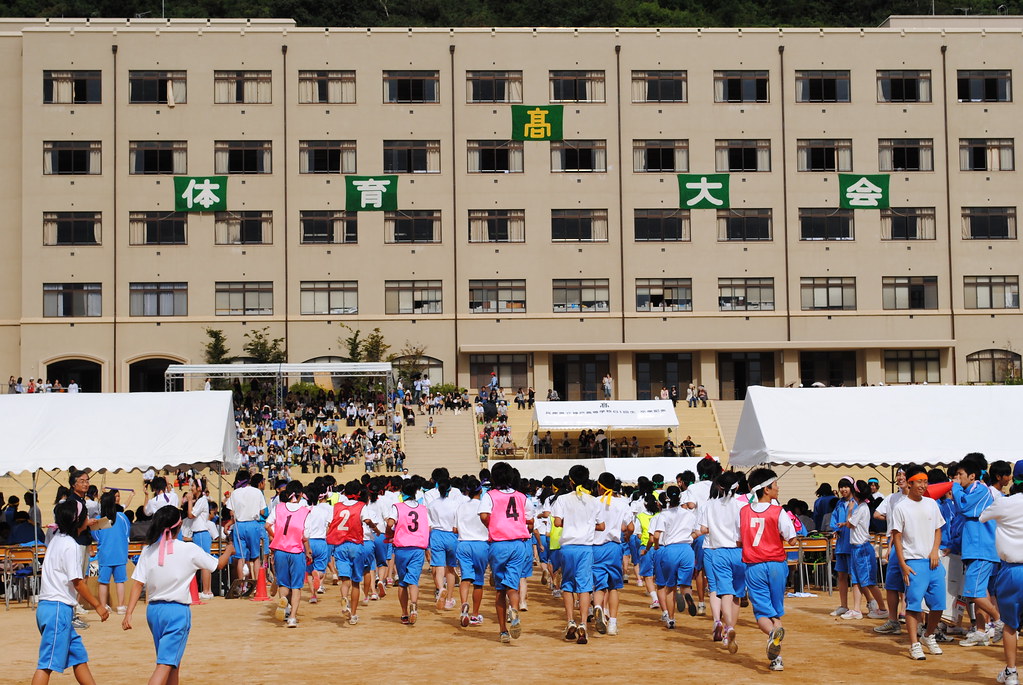
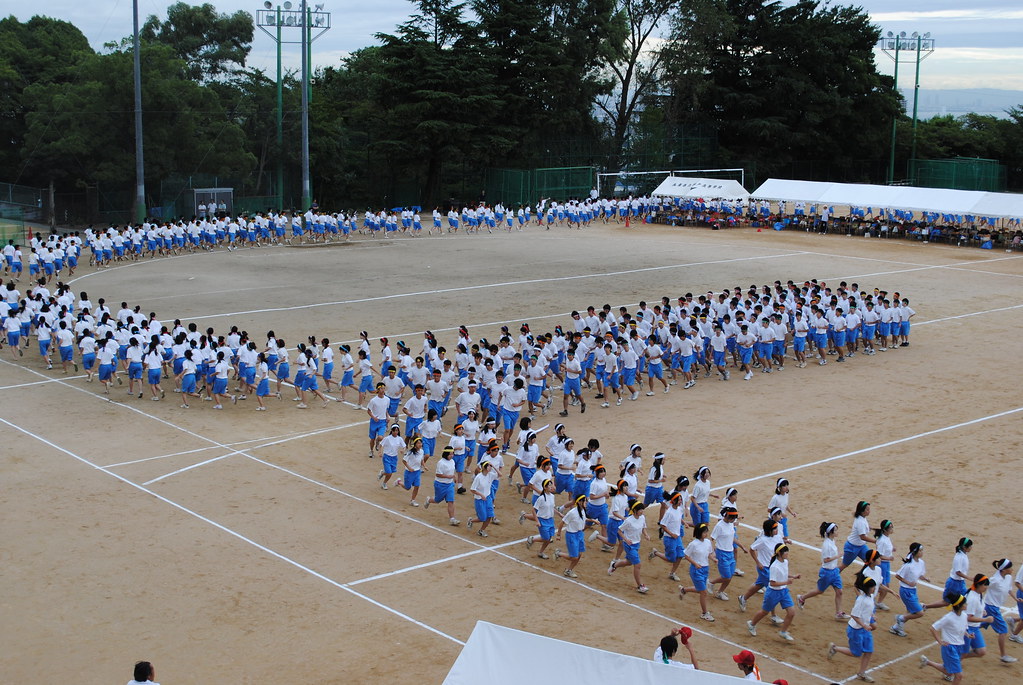
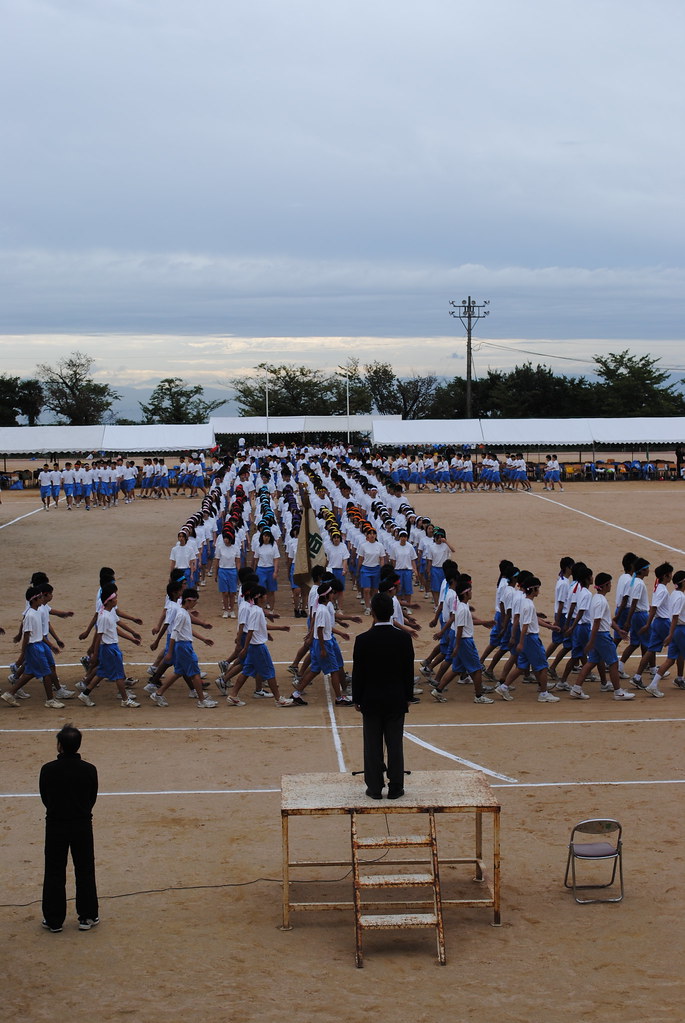
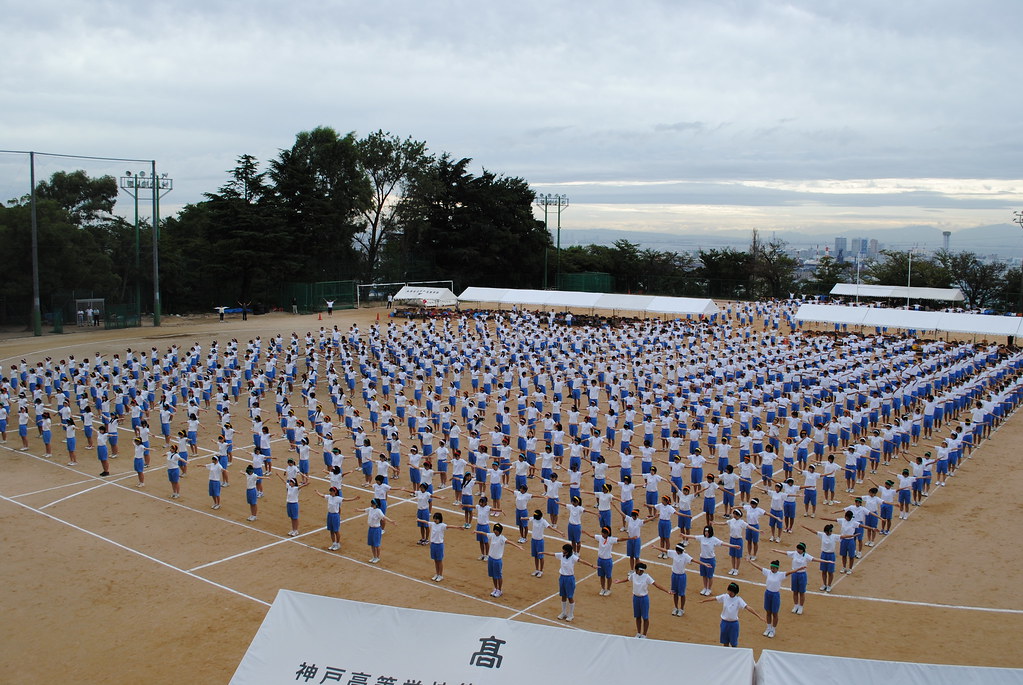
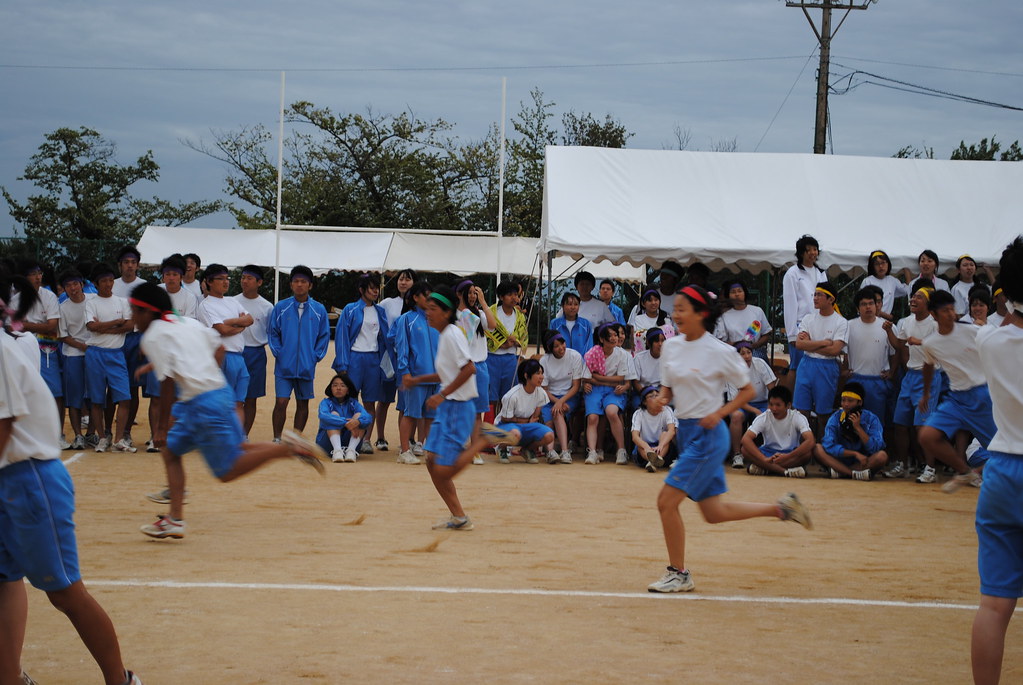
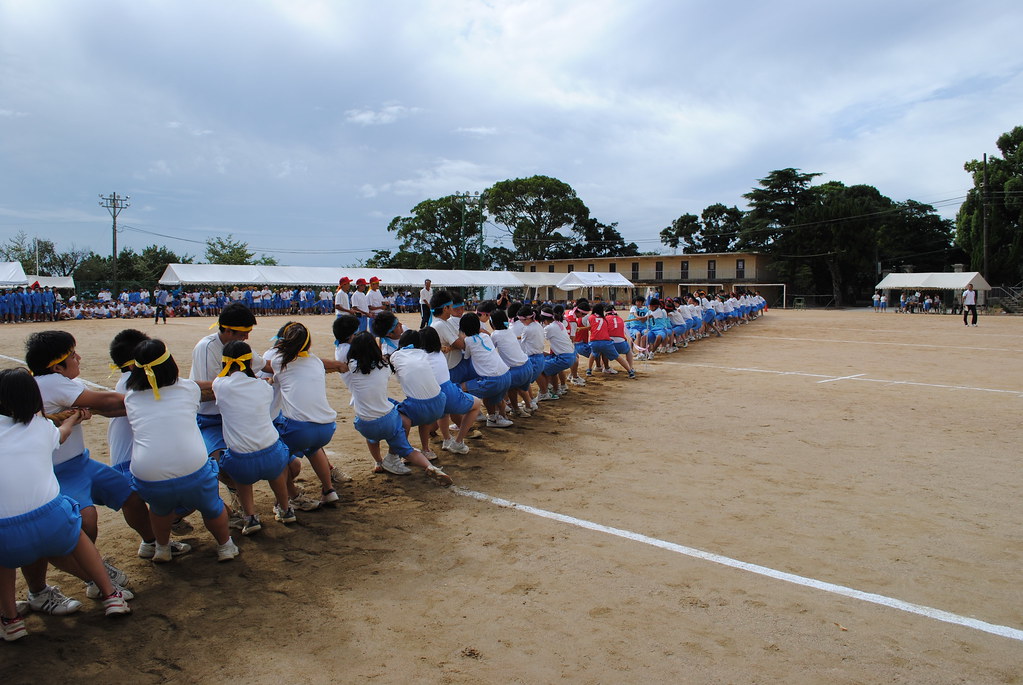
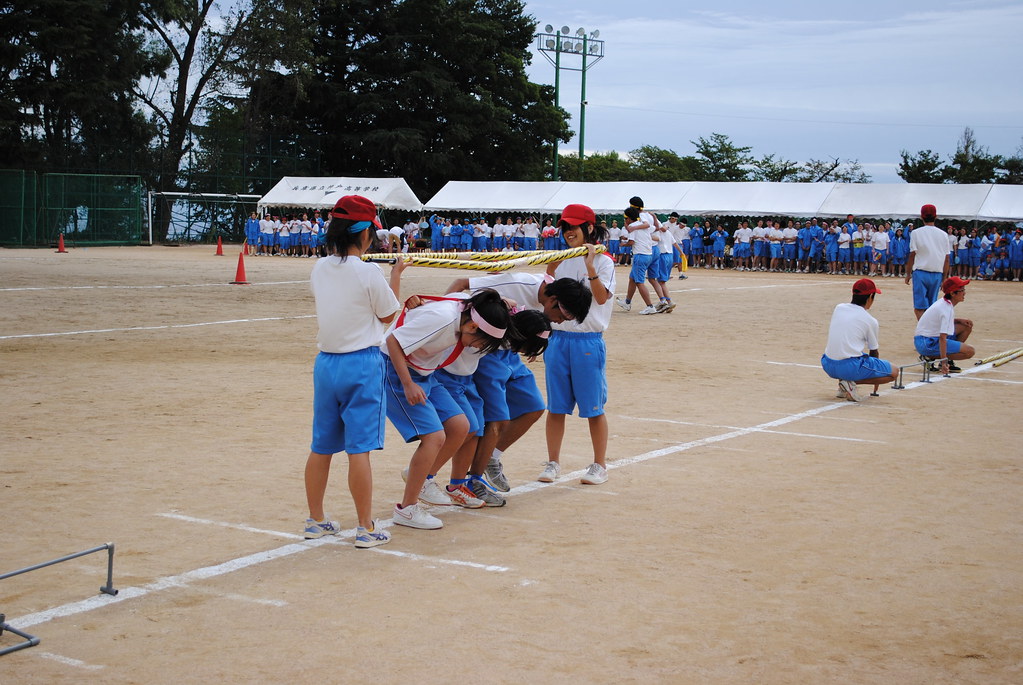





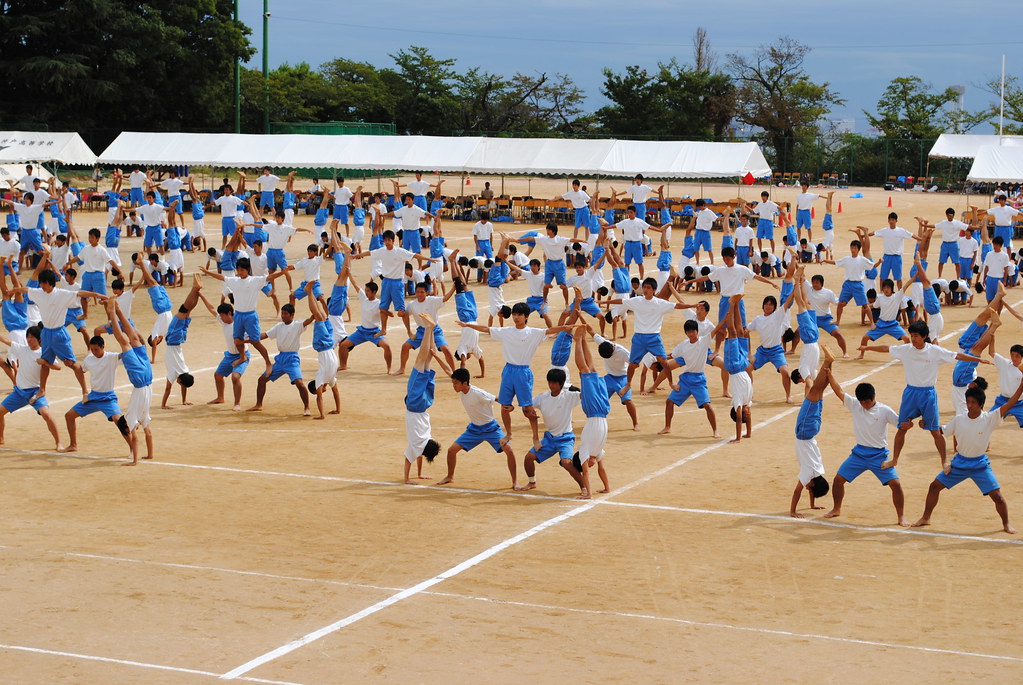
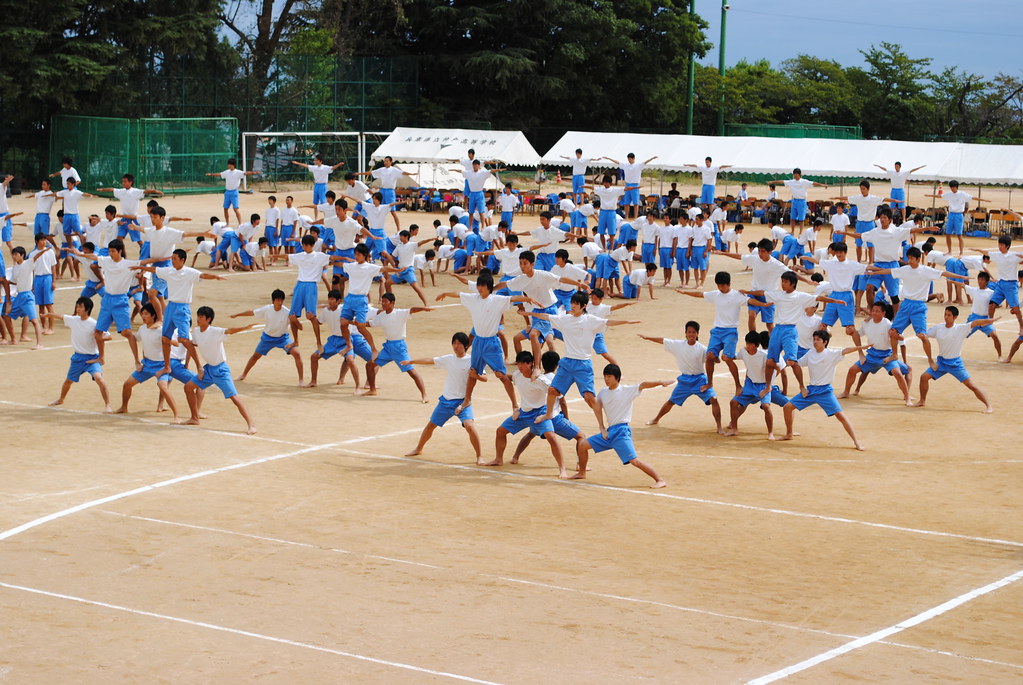

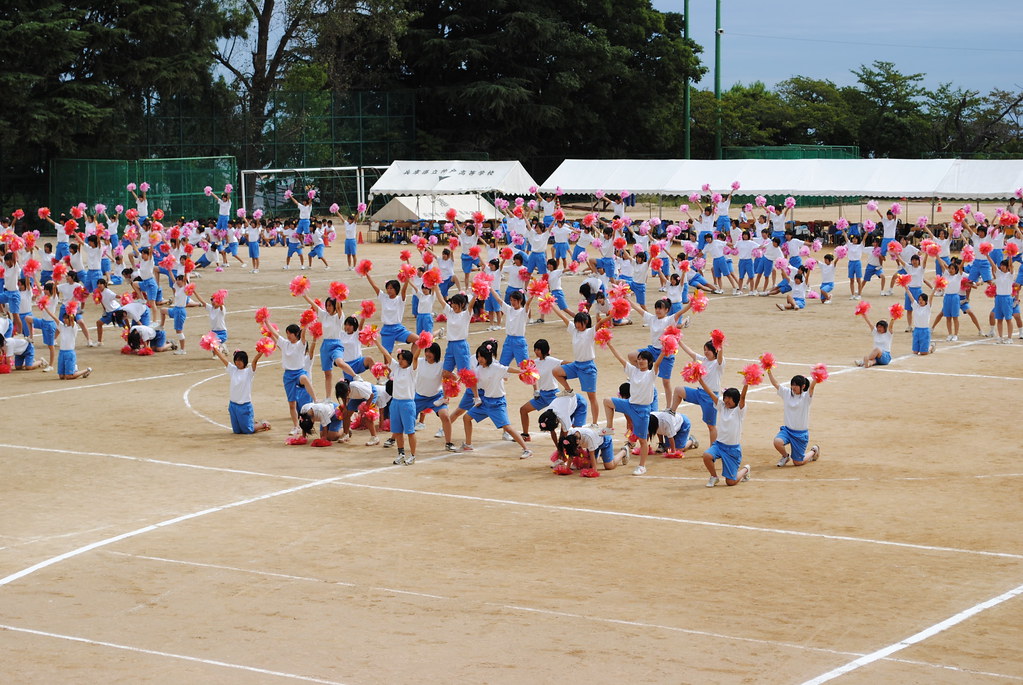
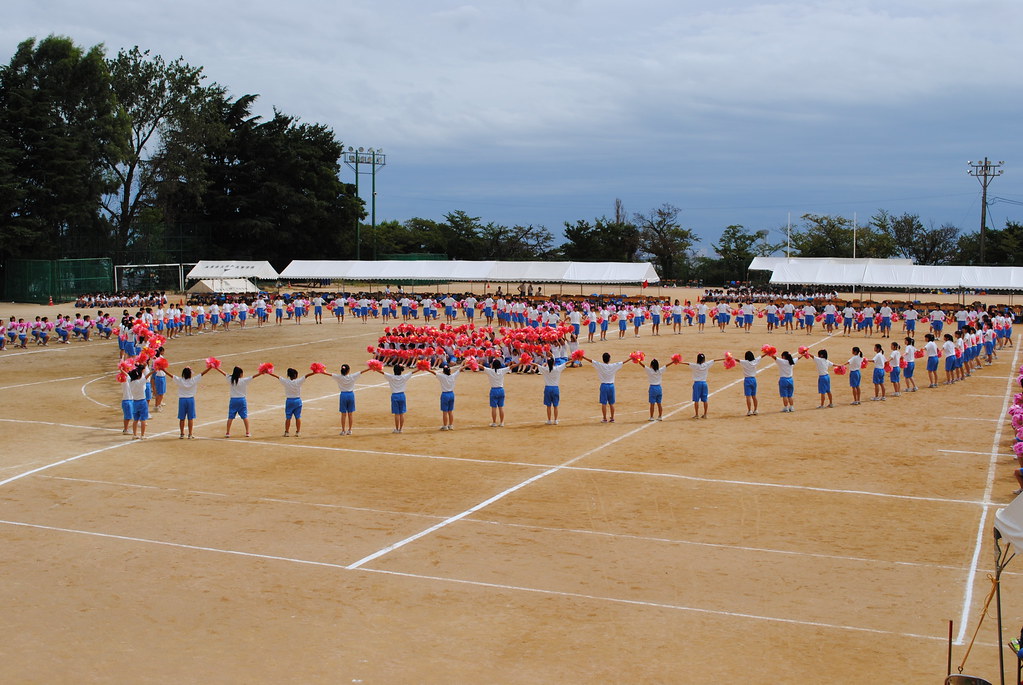
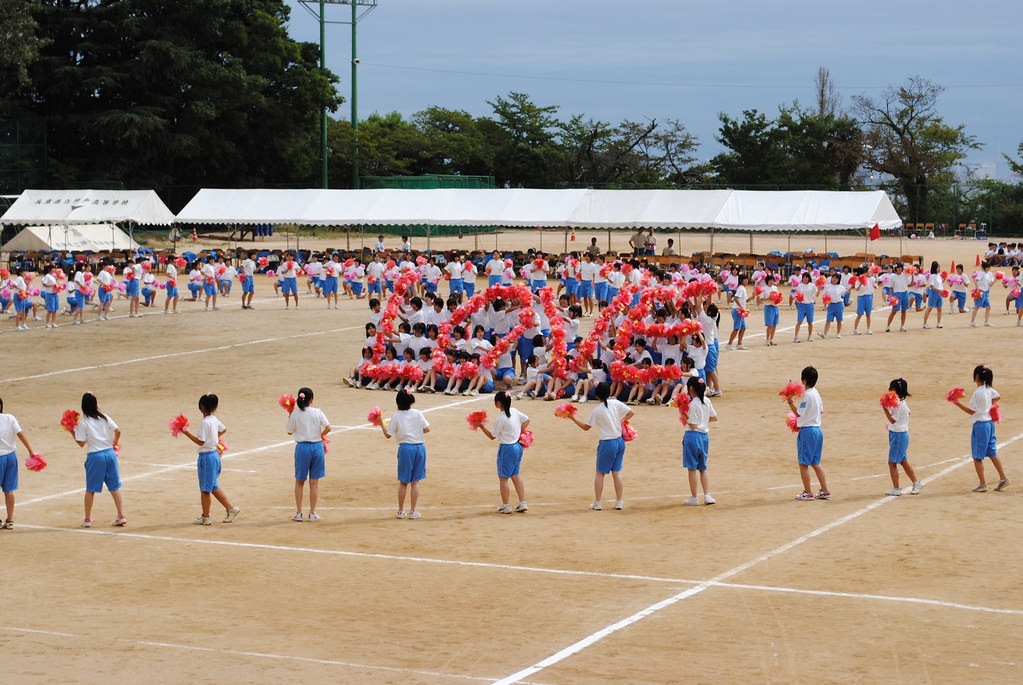
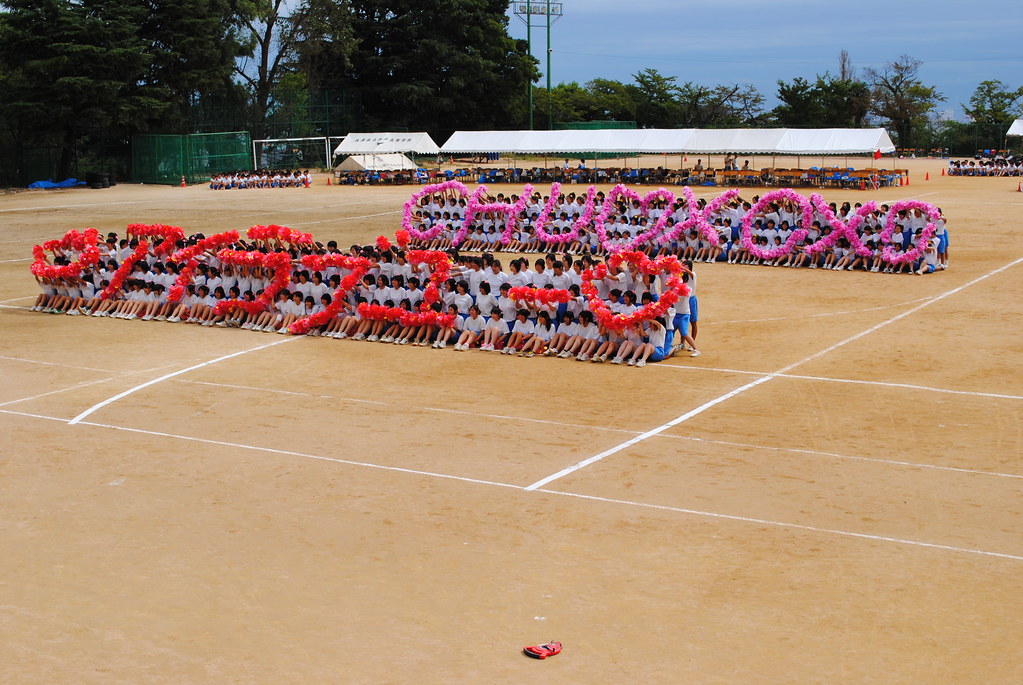
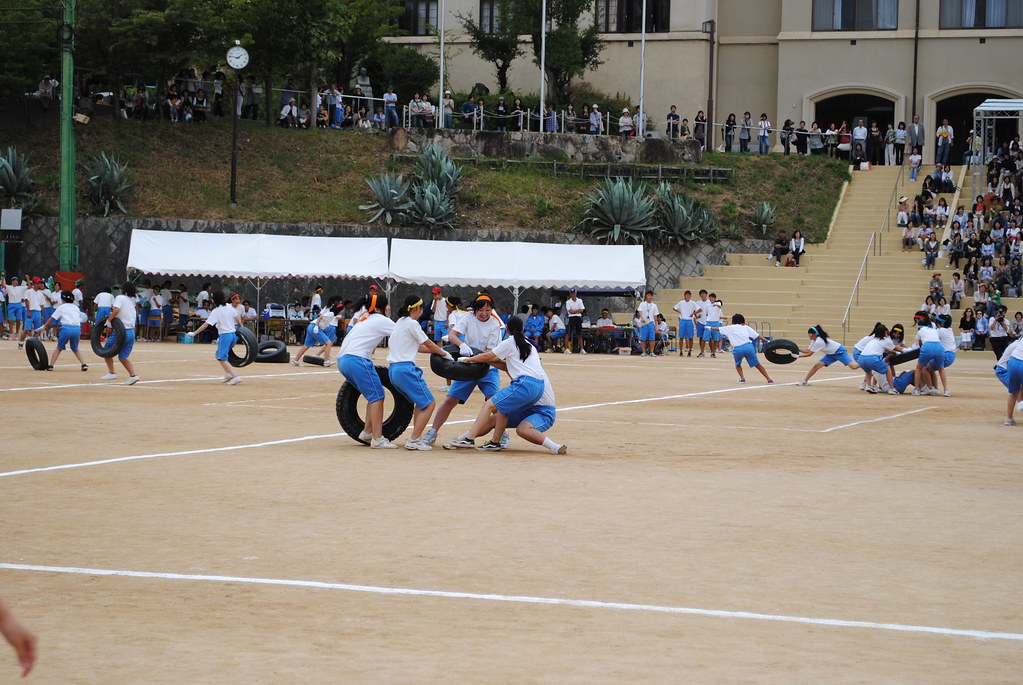
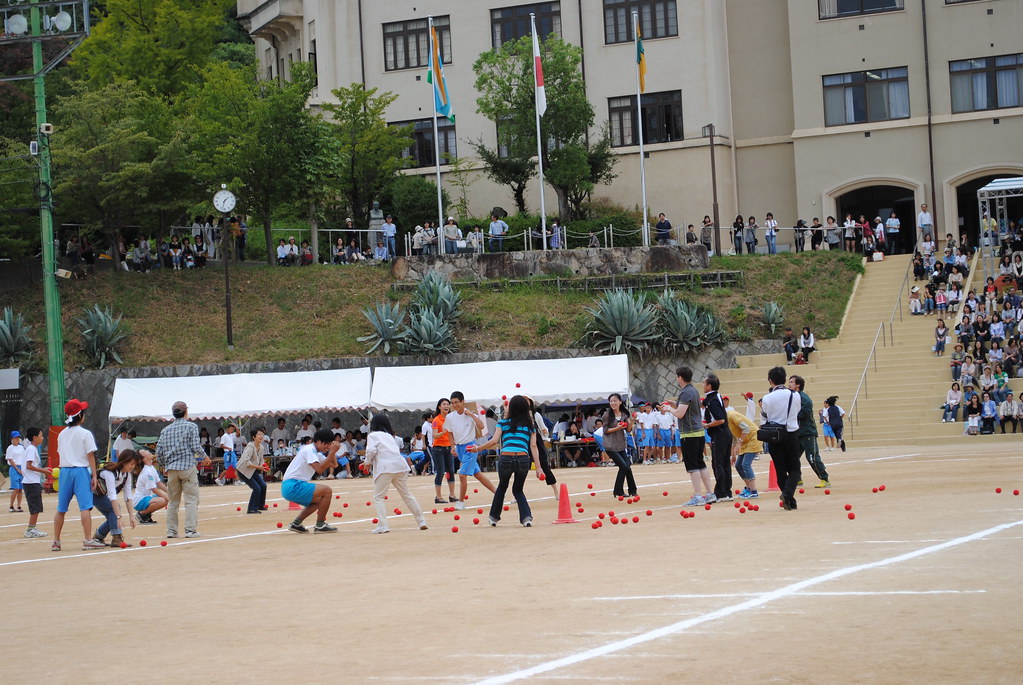


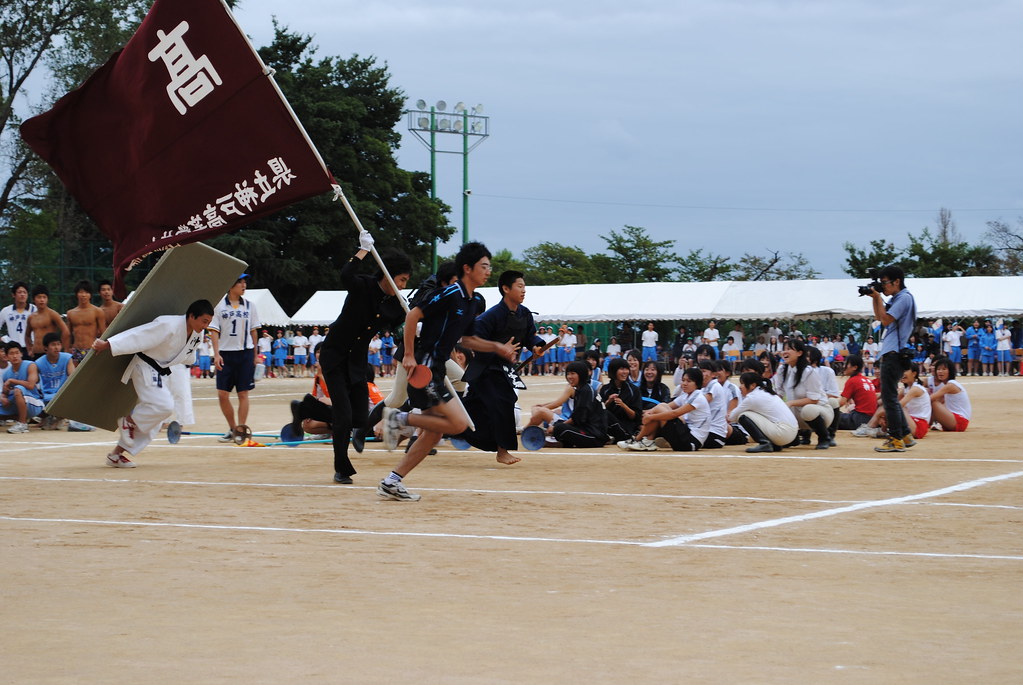


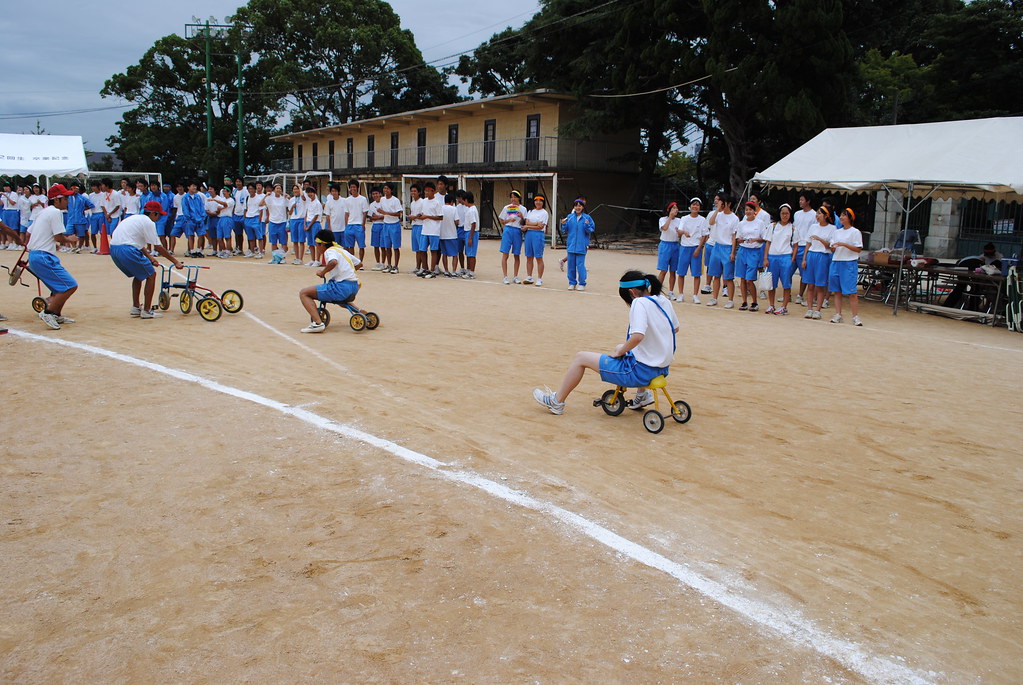



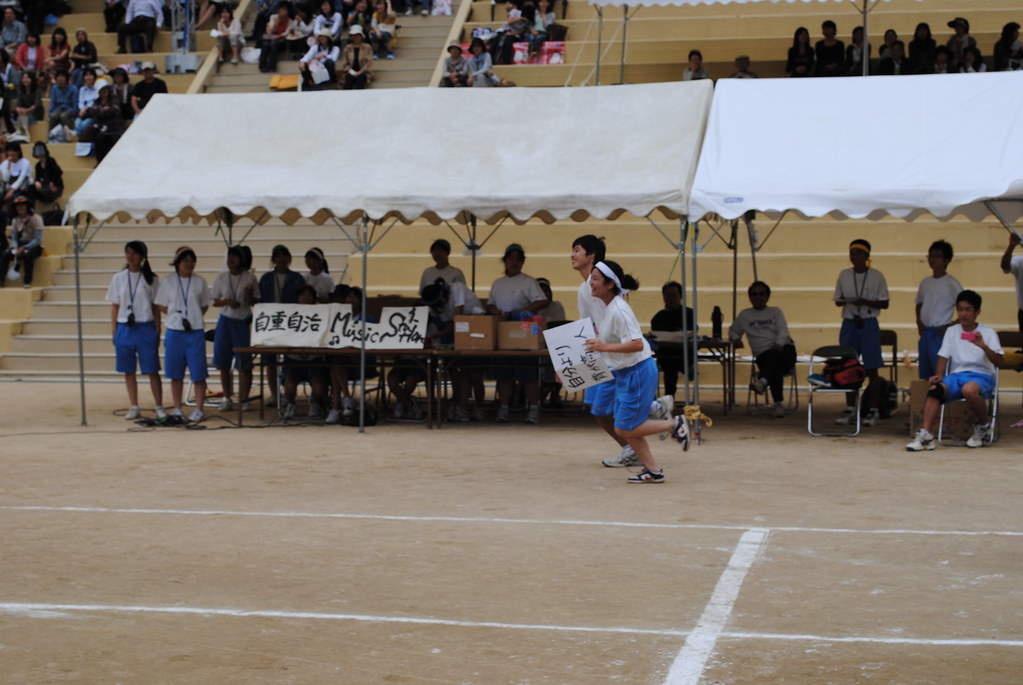
No comments:
Post a Comment
If you have any questions or additions, I would love to hear from you. I may not know the answer, but I'll do my best to find out in any case! You can post anonymously if you like, but abusive/unintelligible/inappropriate comments will not be published.